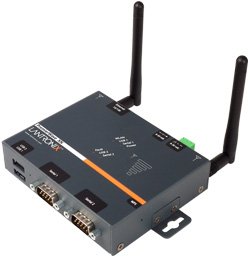A microwave oven is a cooking device that can cook or reheat food
much faster than a conventional oven. Using microwave technology, water
and particles within the food are heated incredibly fast, turning cold
or frozen food into steaming and hot meals. Although the technology
behind microwave ovens has been around for nearly seventy years, many
people still believe there are some health risks associated with using
this type of oven for cooking.
A microwave is a type of radio wave
that can be absorbed by water and certain molecules, like those found
in sugar. The absorption of these waves causes the atoms in the food to
become highly active, effectively creating heat. Most microwave ovens
use a common wave frequency of 2.5 gigahertz (2500 megahertz) that has
proved most effective in the food heating process. This specific wave
frequency cannot be absorbed in high quantities by glass, plaster or
ceramics, meaning that in a microwave oven, only the food will be
affected by the heat.
Like many of science's most interesting discoveries, microwave cooking
was an accidental find. In the 1940s, so legend goes, a scientist
working for the American defense contractor Raytheon accidentally melted
a candy bar in his pocket by hitting it with microwaves. In just a few
short years, the technology had grown to revolutionize the way food is
cooked.
A microwave oven can be a useful appliance to have in your home or
office, particularly if you are pressed for time. With microwavable
versions of everything from oatmeal to turkey dinners, it might be
possible today to make all of your cooked food with a microwave, though
this is not generally practiced. There are several types of microwave
ovens available on the market, from easily transportable countertop
versions to built-in kitchen versions.
You can purchase a microwave at most stores that carry large kitchen
appliances. A basic countertop oven will typically cost between $50-$80
US Dollars (USD). More expensive versions offer features like weight
sensors to prevent burning or undercooking, rotating turntables, and
pre-programmed settings for dozens of foods. While these high end models
make an easy job even easier, they can easily cost upwards of $300 USD
and may not be necessary for the casual microwave oven user.
While microwave ovens may sound like a dream come true for the
time-pressed, some people have expressed concerns over health risks
posed by these ovens. Some foods, like eggs, require a specific internal
temperature to be fully cooked, and can put the eater at serious risk
for food poisoning
or salmonella if undercooked. Others also worry about radiation leakage
from the ovens, though most studies have shown that while leakage is
possible, it is typically in very small doses. To avoid health risks
such as food poisoning, be sure to read all directions carefully and
cook accordingly.
Despite its detractors, a microwave oven is a wonderful boon when you
have no time to cook a hot meal. Although not a total substitute for
traditional cooking methods, they can easily mean the difference between
having a bag of chips or a hot bowl of soup for a quick lunch.
Just Hit The Share Button It Doesn't Bite Your Finger
Subscribe to:
Post Comments (Atom)
-
Subtotal (Functions) The Subtotal function allows you to set up a calculation in your worksheet. Then, by filtering the data, the same...
-
Printing Options for Specific Pages You may not always want to print your entire Word document. There are times when you may want to p...
-
Aptoide is an open source approach to repositories in Android . With Aptoide you can create your own repositories of applic...


No comments:
Post a Comment